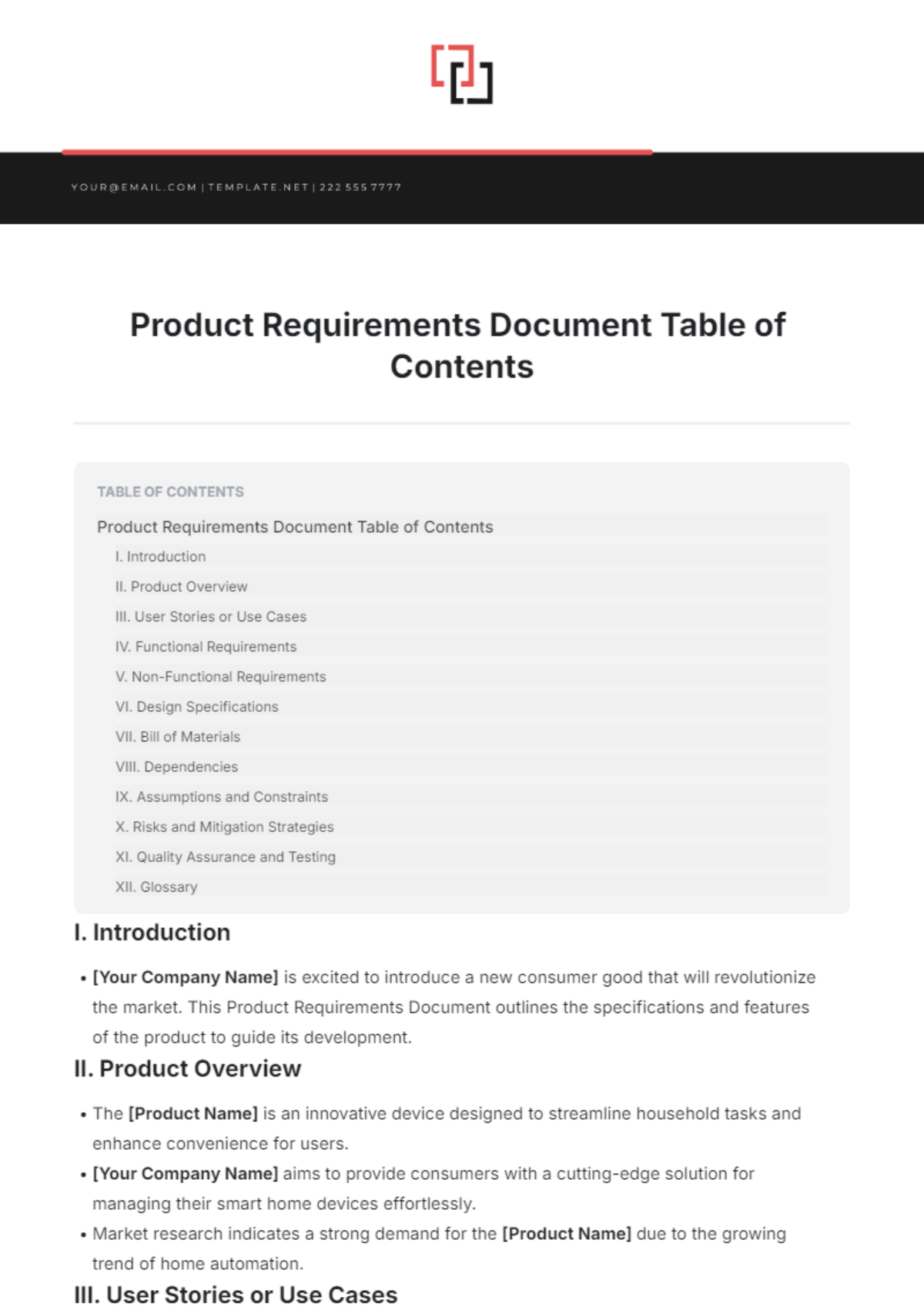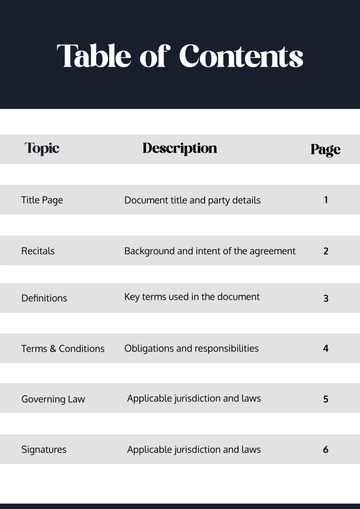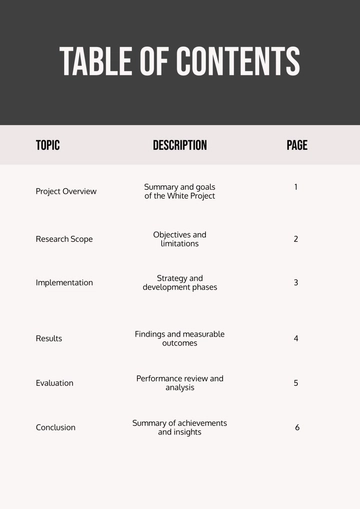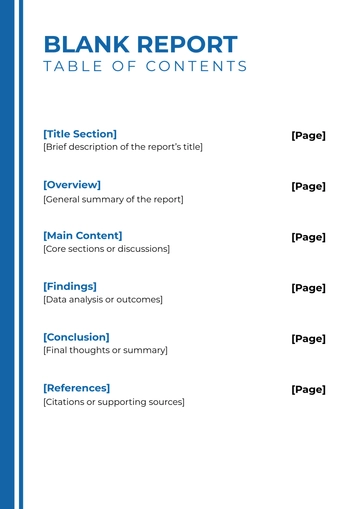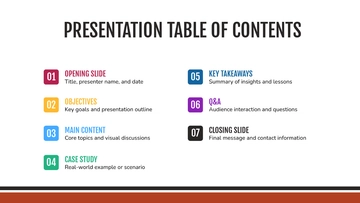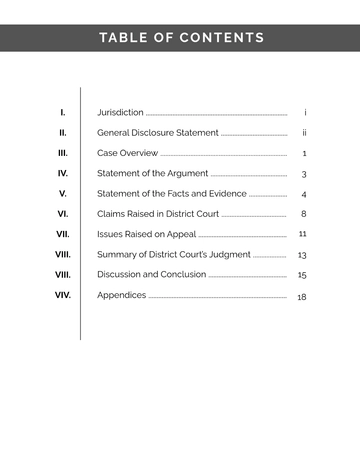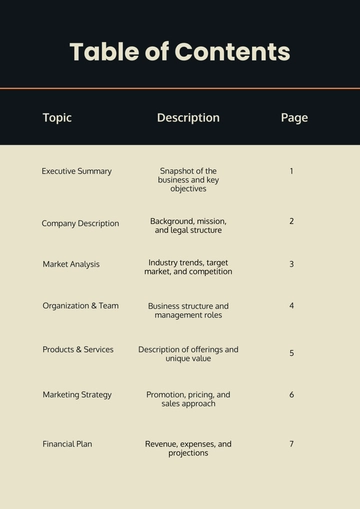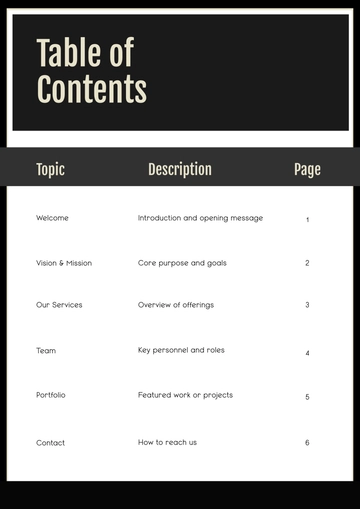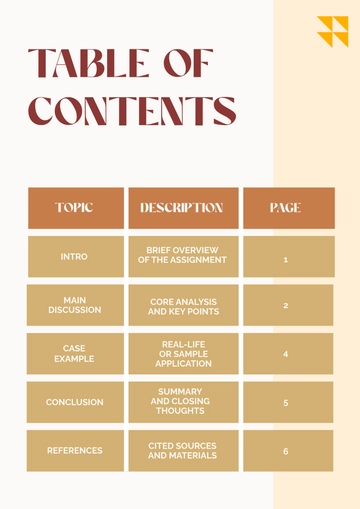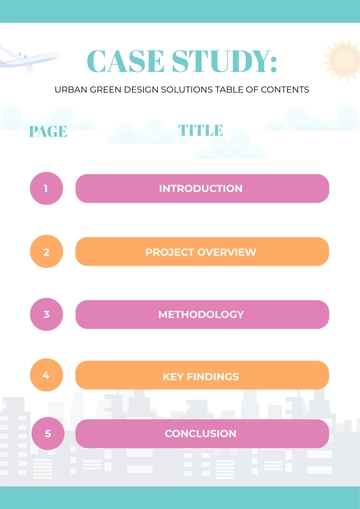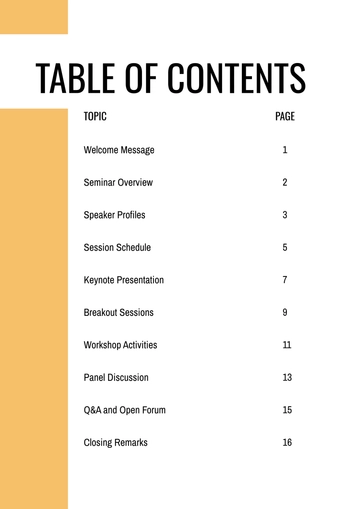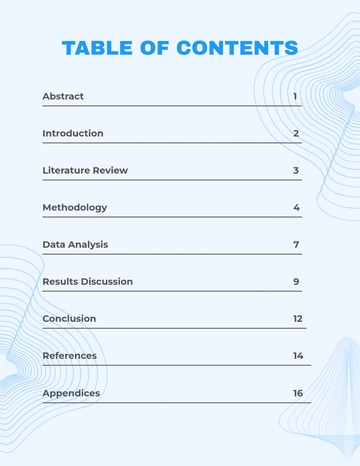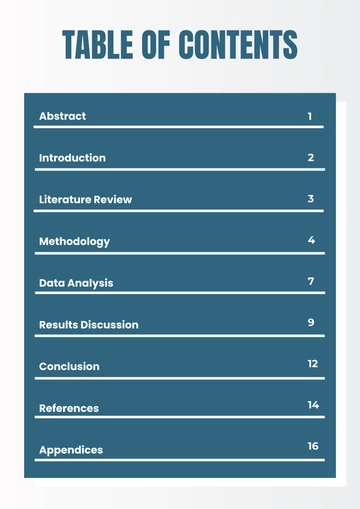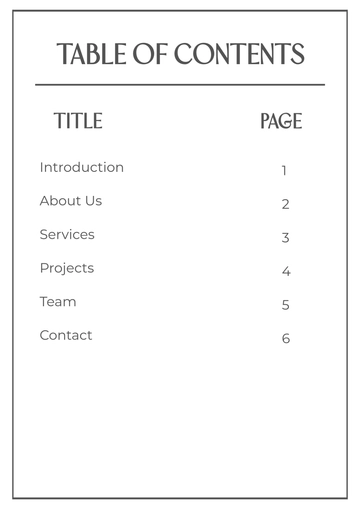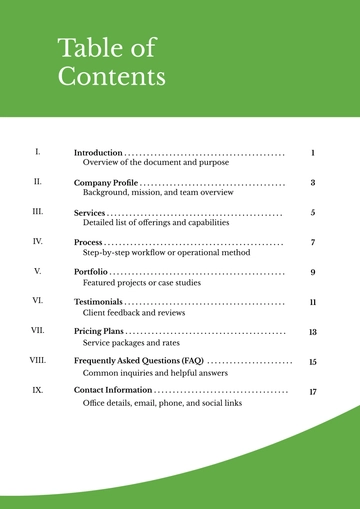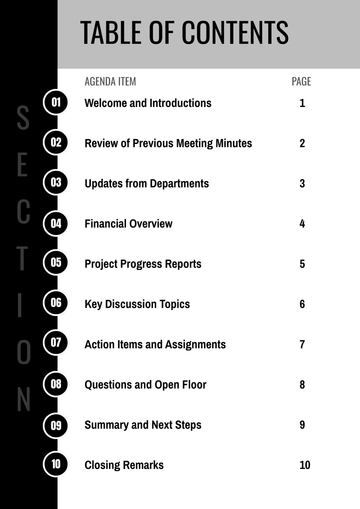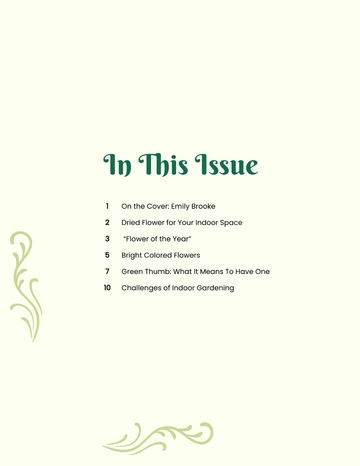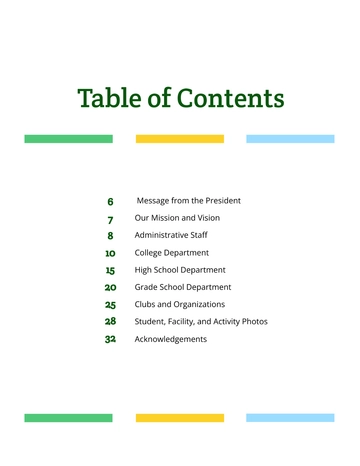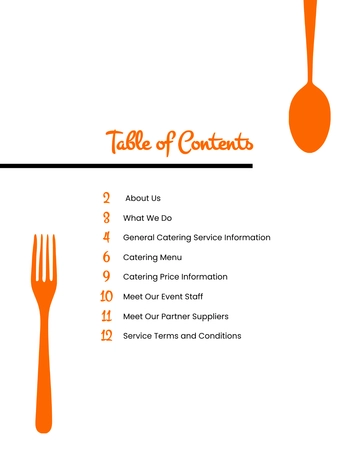Product Requirements Document Table of Contents
I. Introduction
II. Product Overview
The [Product Name] is an innovative device designed to streamline household tasks and enhance convenience for users.
[Your Company Name] aims to provide consumers with a cutting-edge solution for managing their smart home devices effortlessly.
Market research indicates a strong demand for the [Product Name] due to the growing trend of home automation.
III. User Stories or Use Cases
As a busy parent, I want to schedule automated tasks such as turning off lights and adjusting the thermostat to simplify my daily routine.
As a tech-savvy homeowner, I want to control all my smart devices through voice commands for hands-free operation.
IV. Functional Requirements
Feature | Description |
|---|
Voice Recognition | Product accurately recognizes and responds to voice commands within seconds. |
Task Automation | Users should be able to create customized schedules for automated tasks such as dimming lights at sunset. |
V. Non-Functional Requirements
Requirement | Description |
|---|
Performance | The product must respond to user commands with a latency of less than 500 milliseconds to ensure a seamless experience. |
Safety | The device must be equipped with overheating protection to prevent any potential fire hazards. |
Usability | The interface should be intuitive and user-friendly, catering to users of all technical skill levels. |
VI. Design Specifications
Materials: Sleek aluminum casing with matte finish
Color Scheme: Neutral tones to blend with various home decors
Dimensions: 5 inches in height, 3 inches in diameter
VII. Bill of Materials
Component | Quantity | Supplier |
|---|
Microphone | 1 | [Supplier Name] |
Speaker | 1 | [Supplier Name] |
Control Circuit Board | 1 | [Supplier Name] |
VIII. Dependencies
IX. Assumptions and Constraints
X. Risks and Mitigation Strategies
XI. Quality Assurance and Testing
XII. Glossary
Term | Definition |
|---|
Voice Recognition | The process of converting spoken words into text or commands. |
Automation | The ability to perform tasks automatically without user intervention. |
Product Requirements Document Templates @ Template.net
